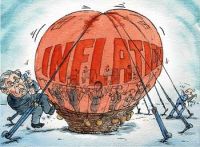
The Consumer Price Index so far was in the shades of Wholesale Price Index (WPI) in the RBI’s official policy declarations. But everything changed with Dr Raghuram Rajan. In the new monetary policy revision, the new Governor referred CPI in scaling inflation.
The government is mostly relying on WPI version in inflation measurement. It often tries to make retail inflation unimportant while mentioning price scenario fearing the higher inflation rate usually recorded under the CPI scale.
Interestingly, the RBI’s deviation is an interesting one given as it tries to depart from the government approach. Now days the RBI shows increasing tendency to deviate from the government on monetary matters. The new CPI inflation approach is a part of it.
The difference between CPI and WPI are also to be noted in understanding the depth of the RBI’s new deviation. The WPI gives more wightage to manufacturing goods. On the other hand, the CPI gives a more picture of the price impact on the consumers as it gives more importance to primary goods in its basket.
Besides, WPI is basically measured at the wholesale level where the price rise effect will be little bit subdued. It is the retailers who take undue advantages during supply shortages.
Because of these, the WPI inflation is quite lower than CPI inflation. At present, the CPI inflation which is otherwise known as retail inflation (as prices are measured at retail level) is 9.52 per cent. On the other hand, WPI inflation is at a lower level of 6.1 per cent; near to the RBI’s comfort zone of 4 to 5 per cent.
Looking from a policy perspective, CPI inflation can be described as the inflation for the people while WPI is inflation for the economy. RBI’s fresh effort to address CPI inflation is a good sign.











